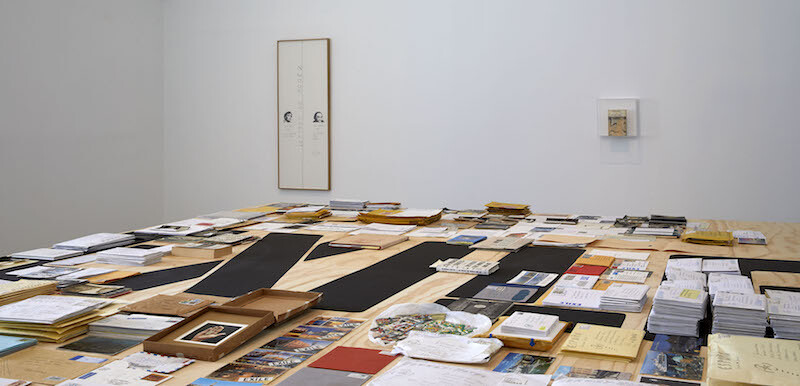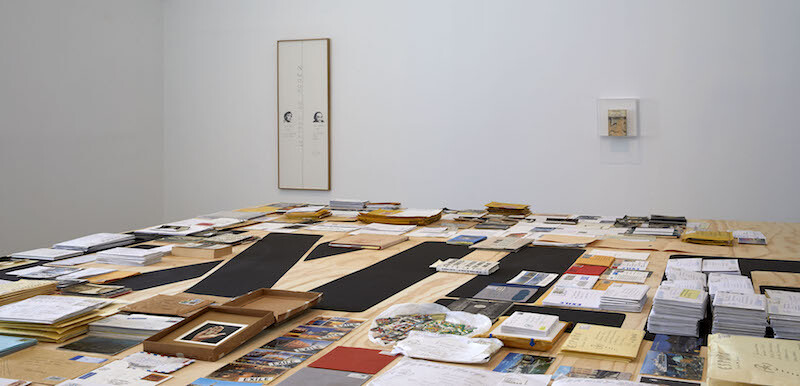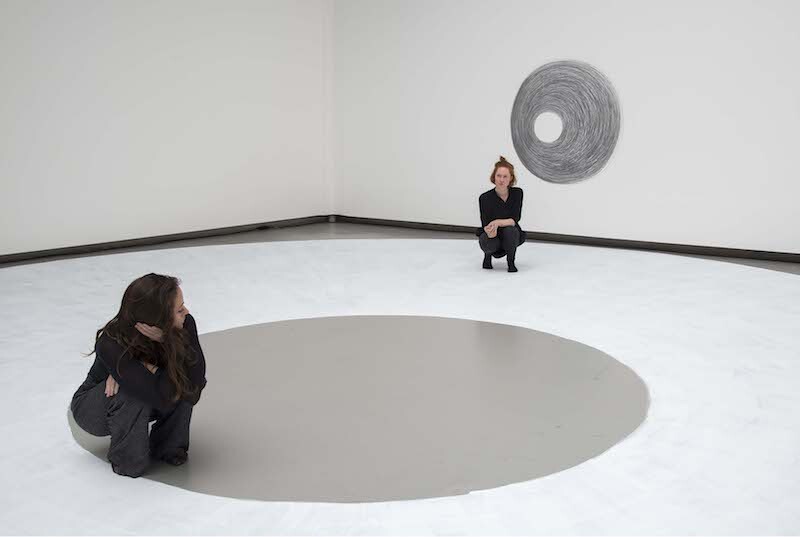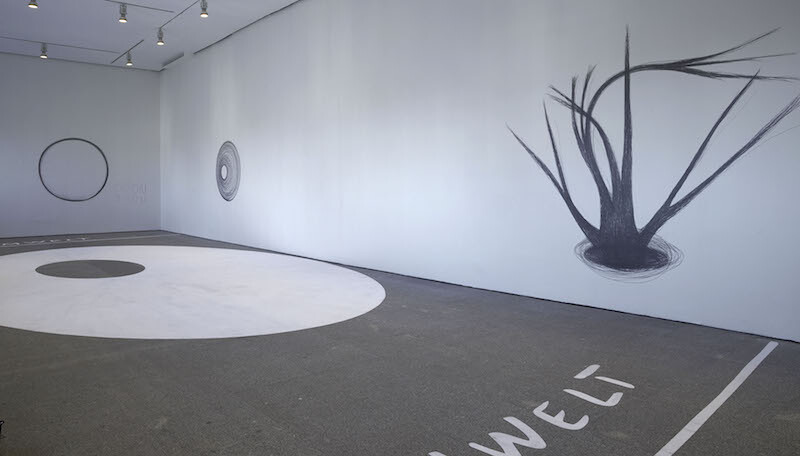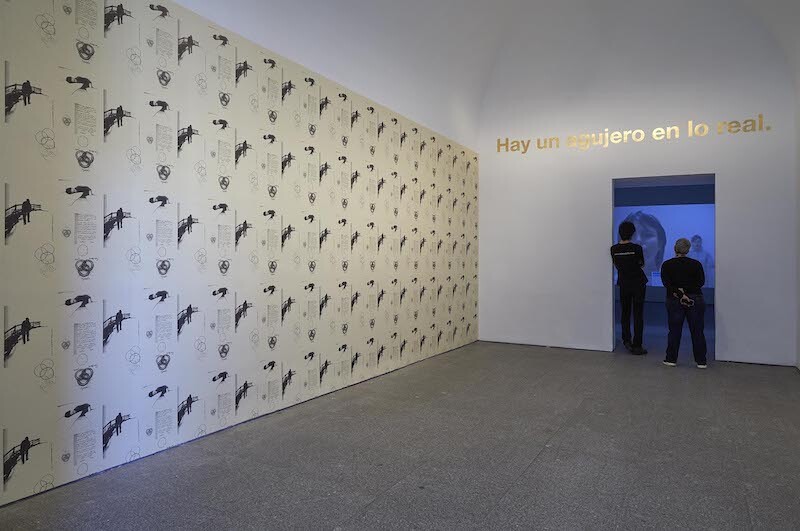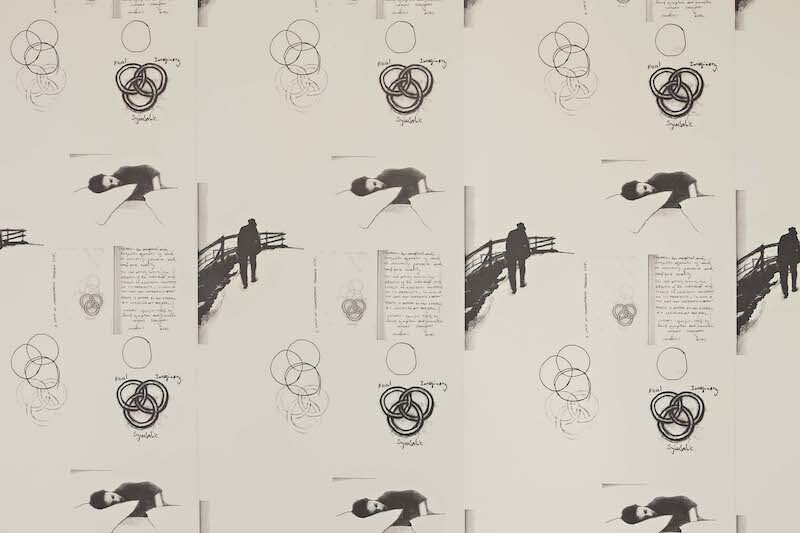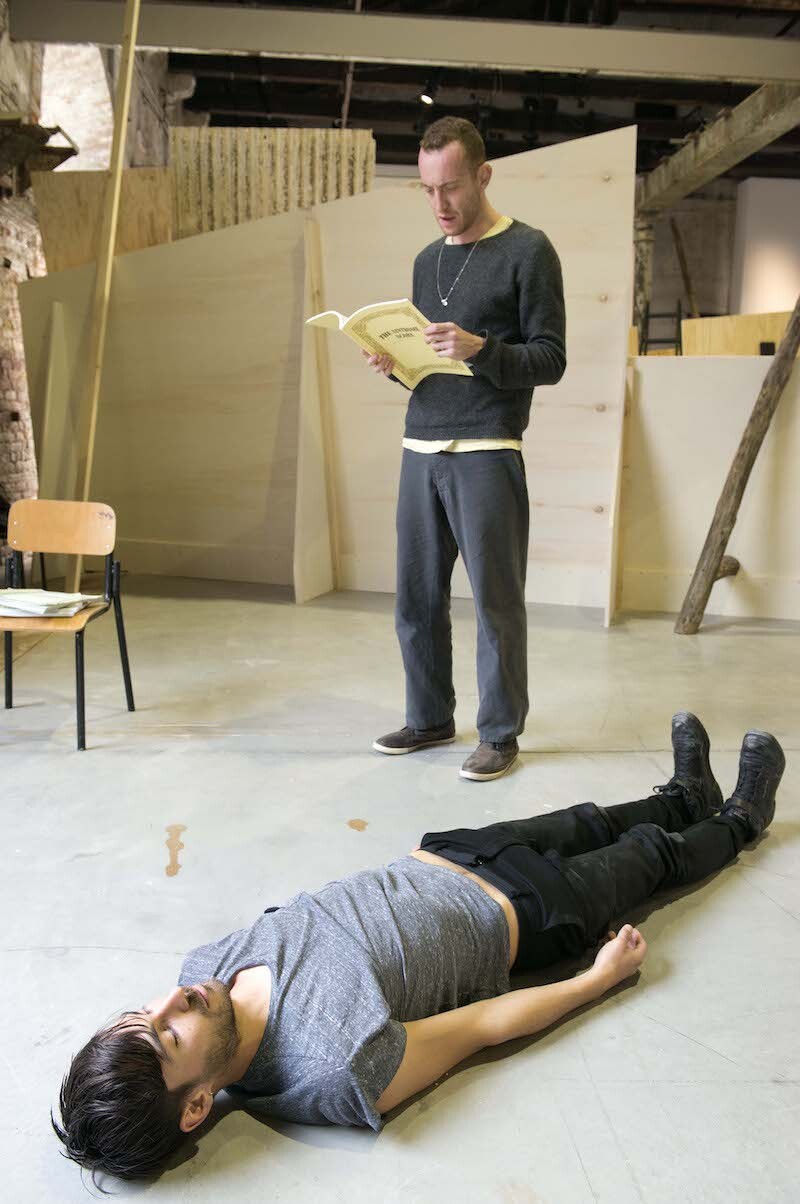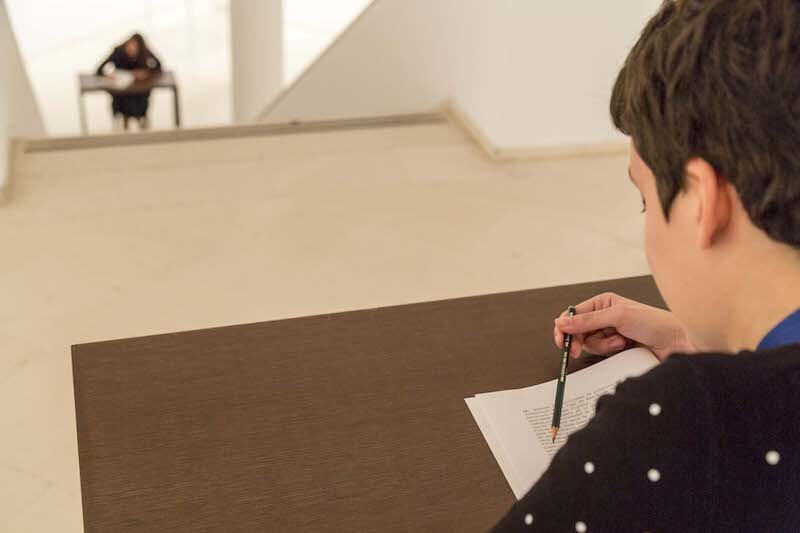Among the artifacts assembled by curators Manuel Borja-Villel and Teresa Velázquez for their illuminating survey of Dora García’s work since 1997 are nine posters detailing the program for “The Inadequate” (2011), a 26-week investigation into radicalism, dissidence, and marginality staged by the artist in the Spanish Pavilion at the 54th Venice Biennale. The “occupation,” as García has referred to her Venice exhibition, commenced with a screening of Just Because Everything Is Different It Does Not Mean That Anything Has Changed (2008), an hour-length document of actor Harli Ammouchi performing imagined material by comedian Lenny Bruce, as well as various screenings, live performances, and public conversations. Some works were repeated, but The Inadequate was largely a durational event, one that was difficult to fully experience. I felt a similar sense of insufficiency visiting García’s Madrid show.
Even after two lengthy visits to the exhibition, which explores the fluid interplay between performance, film, and writing in García’s practice, there were films not fully watched, letters only parsed, and performances not wholly experienced. “Second Time Around” is a mosaic of temporalities. It invites frequent, purposeful encounters with its many and concurrently operating parts. Repetition doesn’t necessarily afford clarity. On the two days I visited, different actors performed the roles of reader and mover in The Sinthome Score (2013–16), a work based on García’s “unofficial” translation of Le Sinthome (1975–76), Jacques Lacan’s 23rd seminar on the relationship between James Joyce and art. The performance has few rules: it only requires two actors; their roles are interchangeable; the work has no fixed choreography. My first encounter with the piece involved a woman directing a man; on the second occasion it involved two men. The casual attire, body shape, and nuanced movements of the actors made each performance distinct.
In 2011, contemplating the refusal nested in García’s attitude to exhibition making as a durational event, art historian Sandrine Meats asked about her relationship to spectatorship. The artist responded with an uncomplicated statement about her schooling and creative ancestry. During her studies at the Rijksakademie in Amsterdam (1985–92), her teachers emphasized positionality over formal values. Hitching her wagon to the careers of Marcel Broodthaers, Stanley Brouwn, Bas Jan Ader, and artists associated with Antwerp’s Wide White Space Gallery (1966–76), García told Meats that her forebears emphasized being over matter: “art is about a gesture of the artist, a position that the artist occupies, and not about the object.”1
Of course, matter still matters, more so in a museum survey. “Second Time Around” is stocked with material markers—or “accidental signifiers,” as the artist prefers—of a professional career: it includes drawings, posters, various displays of books and letters, and an assortment of films, including the titular “Segunda Vez” [Second Time Around] (2018), a quintuple series of films loosely framed around Argentine psychoanalyst and art critic Oscar Masotta, as well as three “delegated performances,” a devolutionary method of choreography borrowed by the artist from Martin Kippenberger, here strategically presented at choke points in the exhibition’s non-linear presentation. There is also a crepuscular sound installation in the museum’s basement, Odradek (2018), which is inspired by an inanimate object in Franz Kafka’s story “The Cares of a Family Man” (1919) and was produced in collaboration with musician Jan Mech.
García’s absorption with literature—be it fiction, theory, or the epistle—is palpable throughout “Second Time Around.” Upon entering the exhibition, the first work one encounters is Jacques Lacan Wallpaper (2013), a photocopied montage of perambulating and sleeping figures flanked by a handwritten text, pasted in repeat across an entire wall. “The real entirely solicits the attention of the individual, often through an aggressive insistence on its materiality,” reads a part of this text. It functions as a cautionary tale. Installed at right angles to the wallpaper, above a doorway to the next room, is the statement “Hay un agujero en lo real” [There is a hole in the real] in big gold letters; it is excerpted from the artist’s series “Golden Sentences” (2014).
The doorway leads to a darkened room playing La lección respiratoria [The Respiratory Lesson] (2001), a six-minute film featuring a young actor doing voice exercises with an instructor in the background. The brevity of this early film is deceptive. García’s filmic oeuvre is substantial and could be the subject of a stand-alone exhibition. Her output includes recordings of performances, documentaries, and even a fiction film, the 31-minute work Zimmer, Gespräche [Rooms, Conversations] (2006). Similar to The Deviant Majority: From Basaglia to Brazil (2010), a 34-minute documentary about the anti-psychiatry movement spawned by Venetian psychiatrist Franco Basaglia, in Zimmer, Gespräche García impressionistically revisits an uneasy historical moment. The culmination of two years of research into the Stasi in East Germany, the film’s subject is German Democratic Republic’s lapsed polity, where “every deviation of the complex choreography of the good citizen” was audited. Set in a Leipzig apartment, the film unfolds as a dialogue between an older male Stasi officer and female informer. “I translate, I play,” says the woman early in the film. It is a plausible contraction of García’s methods and activities as an artist.
The Joycean Society (2013) is a 54-minute documentary about a Zurich-based reading group who since 1986 have been engaged in analyzing Joyce’s Finnegans Wake (1939), page by page, from start to end, again and again. The labor holds no completion. It functions as a kind of a metonym for the exhibition. An anonymous member of the group admits to the “primitive” and “atavistic” pleasures of their activity, a pastime that has along the way generated its own signs, cryptic marginalia transplanted by García from extensively annotated copies of Joyce’s book to a blackboard. The group’s protracted engagement with a single work of art is a model of asceticism and criticality, one that this review hopelessly fails to emulate.
One could look to García’s personal avatars—among them Joyce, Lacan, and Swiss writer Robert Walser—for ideas and methods to engage her sprawling, episodic exhibition. Joyce and Walser both wrote about walking, which as a method proposes drifting and chance wonderment. It is a perfectly viable technique for navigating “Second Time Around,” which includes the taut, silent performance Two Planets Have Been Colliding for Thousands of Years (2017)—it features two actors shifting their poses within the confines of two circles. The drift involves corporeal and material encounters, the latter including a vitrine displaying 11 letters between Hannah Arendt and Martin Heidegger. Entitled On Reconciliation (2016), this archival work is by turns fascinating and obscure. My encounter of it folded into the experience of another, the first proposal from the text piece 100 Impossible Artworks (2001): “to live the life of another.”
Chance and subjectivity are, though, limiting as a critical method. Historian Fernand Braudel offers a sturdier framework for engaging García’s exhibition, which engages the viewer in historical analysis. In his 1960 essay “History and the Social Sciences: The Longue Durée,” Braudel suggested that: “to understand the world, one has to determine the hierarchy of forces, currents, and individual movements, and then put them together to form an overall constellation.”2 Methodologically speaking, this is exactly what García has been doing as an artist: her work, and this exhibition in particular, presents an assemblage of former radicals, forgotten dissidents, and notionally marginal figures who have somehow impacted the course of 20th-century history. The key word here is somehow. Braudel further wrote that is important to “distinguish between long-term movements, and momentary pressures, finding the immediate sources of the latter and the long-term thrust of the former.” This difficult job of analysis is partly undertaken by the artist; far from being refused by the scale and time-consuming intricacy of the work, the viewer is as a key participant in García’s critical project of artistic excavation and historical restatement.
Sandrine Meats, “Interview: Dora García,” InitiArt Magazine (September, 2011), see http://www.initiartmagazine.com/interview.php?IVarchive=64.
Fernand Braudel, “History and the Social Sciences: The Longue Durée,” Review (Fernand Braudel Center) (Vol. 32, No. 2, 2009): 182.
